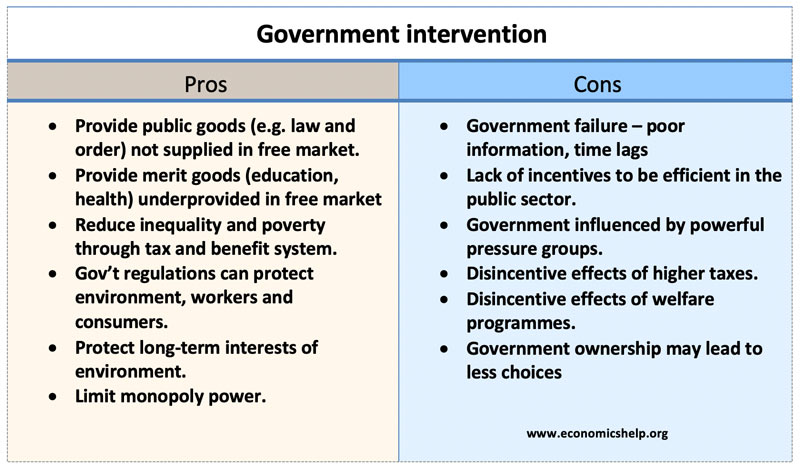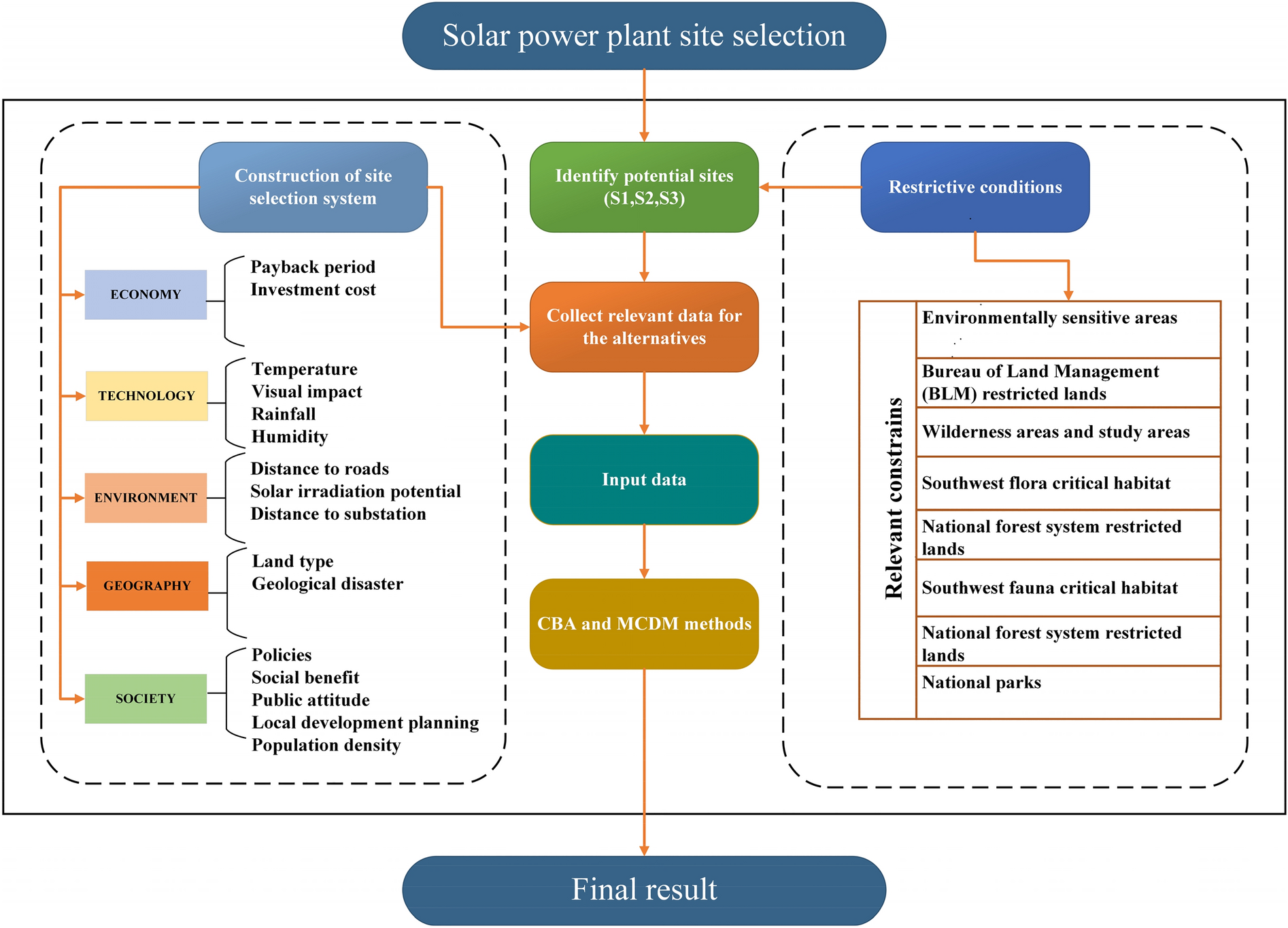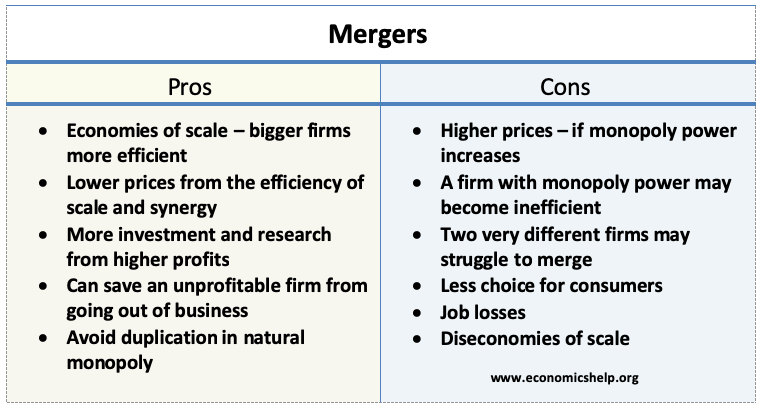Investment Strategies for 2020: Exploring the Pros and Cons of Different Options
Investment Strategies for 2020: Exploring the Pros and Cons of Different Options
The Current Situation: Examining the Global Economy in 2020.
The global economy has faced unprecedented challenges in 2020. From the devastating effects of the COVID-19 pandemic to seismic shifts in the geopolitical landscape, economic uncertainty has become a fact of life. It is essential that we take stock of the current situation and examine how it will shape our future.
COVID-19: The Pandemic’s Impact on Global Economics
The coronavirus pandemic has had an immense impact on the global economy. Governments around the world have implemented sweeping measures such as lockdowns and travel restrictions in an effort to contain its spread, drastically reducing economic activity everywhere in its wake. As a result, global GDP is estimated to shrink by 4.4% this year according to IMF projections, with many countries facing double-digit losses for 2020. Furthermore, high levels of unemployment have left millions without jobs or income, leading to further economic hardship for those affected.
Geopolitical Turbulence: Tensions Rise Between China & The US
Tensions between China and the United States have been rising steadily over recent years and 2020 has seen them escalate even further. Trade disputes between both countries are causing ongoing disruption to global supply chains while also exacerbating nationalistic sentiment worldwide. This could potentially lead to lasting damage if it continues unchecked and could result in significant economic losses for all involved parties if not addressed soon.
Climate Change: An Unprecedented Threat To Global Stability
As if these issues weren’t enough, climate change presents yet another risk factor to global stability. Rising temperatures are contributing towards extreme weather events such as flooding and droughts which can cause significant harm to communities and economies alike—especially in developing nations where resources are often limited or nonexistent for dealing with such disasters. Moreover, sea levels continue to rise due to melting polar ice caps with no signs of slowing down anytime soon; this could spell disaster for coastal cities around the world unless immediate steps are taken towards mitigation and prevention efforts now before it’s too late..
Looking Ahead: What Does The Future Hold?
It is clear that there are serious risks ahead which must be addressed promptly before they become unmanageable threats to our collective security and prosperity as a species. In order for us all to move forward together into a brighter future, we must work collaboratively across borders while also taking individual responsibility at home by acting responsibly during this difficult time period so that we may all emerge stronger than ever when it ends eventually..
Property Investment: Is it a Good Option?
Property investment has been a popular form of investment for centuries, with many people considering it to be one of the best ways to build wealth and diversify their portfolios. While there are some risks associated with investing in property, when done correctly it can provide a secure and steady stream of income for years to come.
The first step in determining if property investment is a good option for you is understanding the different types of investments available and their associated risks. There are two main types of property investments: residential and commercial. Residential real estate investments include single family homes, condos, townhomes, duplexes, or multi-unit properties that are leased or rented out to tenants. Commercial real estate investments involve office buildings, retail spaces, warehouses and other large scale properties that may be leased out to business tenants.
When choosing between residential and commercial property investment opportunities it’s important to consider your own risk tolerance as well as the type of return you’re hoping to achieve on your investment. Residential rental properties tend to be more affordable than commercial investments but also offer lower returns due to the smaller size of the units involved. Meanwhile commercial real estate offers higher returns due to their larger size but also requires more capital up front making them better suited for experienced investors who have access to greater amounts of financing options.
In addition to understanding the different types of property investments available, it is also important to consider local market conditions in order determine if an area is a wise place for investing in real estate at this time. Factors such as population growth rate and job market trends should all be taken into account when deciding if an area is suitable for investing in property or not. Additionally research should be done on any potential tenants who will inhabit the building once purchased; credit scores should be reviewed along with references so that you can gain insight into prospective tenant behaviour prior committing any funds towards purchasing a unit or building.
Overall while there are risks associated with any sort of investment opportunity, when properly researched and understood investing in real estate can prove beneficial both long term and short term depending on individual needs and circumstances; so long as you understand what kind of return on your money you’re looking for as well as researching local markets carefully then investing in property could potentially prove very rewarding indeed!
Stock Market Investing: Pros and Cons.
When it comes to investing, stock market investing is one of the most popular strategies. It can be a great way to diversify your investments and potentially maximize returns, but there are both pros and cons that you should consider before diving in headfirst.
The Pros
One of the biggest advantages of stock market investing is the potential for high returns. The stock market has historically produced higher returns than other traditional investments like bonds or real estate, and when done properly, can yield significant profits over time. Additionally, with stocks you have the chance to create a portfolio that meets your personal goals and risk tolerance. This allows for more control over your money than many other types of investments.
The Cons
On the downside, stock markets have risks associated with them that can lead to losses. Despite its potential for high returns, stocks are volatile and prices can go up or down without warning. This means that investors must be aware of trends and make sure to diversify their portfolios if they want to minimize their risk exposure. Furthermore, stock markets involve fees such as brokerage commissions which can eat into any profits gained from successful trades. As such, investors must factor these fees into their overall strategy in order to maximize their earnings potential
Mutual Funds: Understanding the Benefits and Risks.
Mutual funds are a great way to diversify your investments and reduce risk, but it is important to understand how they work and the potential risks associated with them. Mutual funds are professionally managed portfolios of stocks, bonds, or other securities. By investing in a mutual fund, you can spread your money across many different types of investments and benefit from the expertise of professional money managers.
The primary benefit of mutual funds is that they allow investors to diversify their holdings without having to research and buy individual securities themselves. For example, an investor may not have the time or resources to purchase a portfolio of stocks representing various industries like technology, banking, retail, etc., but by investing in a mutual fund they can access these investments through one simple purchase. Many mutual funds also offer additional benefits such as lower commissions compared to buying individual stocks or options contracts.
Another advantage of mutual funds is that they often offer higher returns than traditional savings accounts and certificates of deposit (CDs). Mutual fund investors typically receive dividends from the underlying securities within the fund which can provide higher yields than other forms of savings vehicles. Additionally, many mutual funds also offer capital gains distributions which may provide further opportunities for investment growth.
While there are numerous benefits associated with investing in mutual funds, it’s important to note that there are also risks involved. One major risk is market risk; this means that if the overall stock market declines (or if certain sectors decline), then your holdings could potentially lose value as well. Other risks include management risk (the performance of the fund manager) and liquidity risk (the ability to quickly sell your shares when necessary). It’s important for investors to understand all possible risks before investing their money in any security or investment vehicle including mutual funds.
Overall, investing in mutual funds can be beneficial for those looking for diversification and professional management without having to invest large sums of cash into individual securities or manage their own portfolios. As with any investment however, it’s important for investors to do their research before making any decisions so they fully understand all potential risks associated with their investments before proceeding
Bonds: An Overview of How They Work.
Bonds, also known as fixed-income securities, are debt instruments that companies and governments use to raise money. When you buy a bond, you are essentially loaning money to the issuer in exchange for periodic payments of interest along with the return of your principal at maturity. The issuer pays interest on the bonds at regular intervals – usually every six months or once a year. Most bonds mature within 10 years, but some can last up to 30 years.
Bonds are attractive investments because they offer consistent income, often higher than savings accounts and other cash investments. They also provide diversification for an investor’s portfolio since bond prices may move differently from stock prices during market fluctuations.
When purchasing a bond, investors look at several factors including the creditworthiness of the issuer (how likely it is that the issuer will pay back its debt), the bond’s coupon rate (the amount of interest paid out on an annual basis), and its maturity date (the date when the full amount of principal is due). Bond yields can vary significantly depending on these factors; low-risk government bonds typically have lower yields while corporate bonds tend to offer higher yields in exchange for greater credit risk.
Once a bond has been purchased, there are two important things to consider: reinvestment risk and inflation risk. Reinvestment risk refers to how much time value remains in a bond; if rates rise after purchase then it becomes more difficult for investors to find comparable options when their current bonds come due. Inflation risk relates to how well your investment keeps up with changes in purchasing power over time; if inflation rises faster than expected then your returns may be devalued by the time your principal is returned at maturity.
Overall, investing in bonds can be an important part of any financial plan as they can provide stability and income throughout different market cycles. Investors need to understand their goals and assess all risks associated with investing in order to make an informed decision about which type of bond works best for them.
Exchange Traded Funds: Exploring Their Potential Return on Investment.
An Exchange Traded Fund (ETF) is an investment fund that holds a portfolio of underlying assets such as stocks, bonds, commodities or other securities. As an investor, one can buy and sell ETFs on a stock exchange just like any other stock. These funds offer investors the ability to gain exposure to various asset classes at a low cost with greater liquidity and flexibility than traditional mutual funds.
ETFs have become increasingly popular in recent years as investors seek out investments with potential for attractive returns. With their low expense ratios and tax efficiency, ETFs provide investors with numerous advantages over traditional mutual funds, including lower costs and increased transparency. Furthermore, they are often more tax efficient than actively managed mutual funds since they generate fewer capital gains taxes due to their higher turnover rate.
One of the primary benefits of investing in ETFs is diversification across different asset classes or sectors that may not be available through individual stocks or mutual funds alone. By spreading your money across multiple assets, you can reduce your risk without sacrificing potential return on investment (ROI). Furthermore, ETFs can provide access to global markets that may otherwise be difficult or expensive to invest in directly.
Another advantage is ETFs’ liquidity; they are traded intraday like regular stocks, which means you can quickly enter or exit positions if needed without worrying about after-hours trading restrictions like those imposed on mutual funds. Additionally, most index-based ETFs do not require minimum initial investments and offer reduced brokerage fees when compared to buying individual stocks — making them particularly ideal for smaller portfolios looking to expand into multiple asset classes simultaneously.
Finally, due to their passive nature, index-based ETFs typically have lower expense ratios than actively managed mutual funds — meaning more money stays in your pocket instead of being paid out in management fees! This makes them especially appealing for long-term investments where compounding returns can really pay off over time.
Overall, Exchange Traded Funds provide investors with some distinct advantages when it comes to potential ROI — particularly when it comes to diversifying portfolios beyond traditional investments such as individual stocks or mutual funds without sacrificing liquidity or incurring exorbitant management fees. For those looking for a low-cost way to maximize returns while mitigating risk through diversification — Exchange Traded Funds are definitely worth exploring further!
Cryptocurrency Investing: What You Need to Know.
Cryptocurrency investing is becoming increasingly popular, but it can be quite a daunting task if you don’t know where to start. Whether you’re a beginner or an experienced investor, there are certain things that you should know before putting your money into any cryptocurrency.
First and foremost, research is essential. You want to make sure that the cryptocurrency you are investing in is reliable and trustworthy. Take the time to read reviews of different currencies, as well as their market performance over time. Additionally, familiarize yourself with the technology behind the currency – understanding how it works can help you better evaluate its potential success or failure.
Another important factor to consider when investing in cryptocurrency is risk management. Before diving into any investment, be sure to assess your own risk tolerance and financial situation. Ask yourself questions such as “how much money am I prepared to lose?” and “do I have an exit strategy for my investments?” These questions will help you ensure that your investments are safe and secure.
It’s also important to remember that timing is key when it comes to cryptocurrency investing. Markets can be volatile and unpredictable, so try not to get too caught up in short-term trends or decisions – instead take a long-term view of the market and look out for opportunities that could potentially bring big returns down the line.
Finally, diversification is key when it comes to any kind of investment portfolio. Rather than putting all your eggs in one basket, spread out your investments across multiple currencies in order to reduce overall risk levels and ensure greater returns on your capital over time.
Investing in cryptocurrency can seem intimidating at first but with proper research and cautionary measures you could see great returns on your investment! So make sure you do thorough research before taking the plunge – good luck!
Real Estate Investment Trusts (REITs): What are they?
A Real Estate Investment Trust (REIT) is a type of investment vehicle that allows individual investors to pool their money to invest in real estate. REITs provide investors with the opportunity to diversify their portfolios across different types of real estate investments such as office buildings, shopping malls, apartments, and others. They are also known for providing higher yields than traditional stocks or bonds, and often have lower management fees than other forms of real estate investments.
REITs are similar to mutual funds in that they offer a variety of investments under one roof. However, unlike mutual funds which invest in stocks and bonds, REITs only invest in income-producing properties or mortgages. This means that when you invest in a REIT, you own an interest in the underlying property assets without actually owning them yourself.
The main benefit of investing in a REIT is that it provides investors with access to professionally managed real estate assets at relatively low cost and risk. Additionally, because REITS are publicly traded on major exchanges like the New York Stock Exchange (NYSE) or NASDAQ they offer more liquidity to investors than other types of investments such as direct ownership of physical real estate assets.
When investing in REITs it’s important to understand the different types available so that you can make an informed decision about which type is right for your needs and goals. Generally speaking there are three main categories: equity REITs, mortgage REITs and hybrid REITS which combine both equity and mortgage backed investments into one portfolio. Each type has its own unique benefits and risks so understanding these differences can help you make an educated decision about which option is best for you.
Overall, Real Estate Investment Trusts can be an excellent way for individual investors to gain access to professionally managed real estate assets at relatively low costs while diversifying their portfolios across different types of properties
Gold and Silver as Investments: Pros and Cons.
Gold and silver have long been considered viable investments, with many investors considering them to be a safe haven in times of economic hardship. These precious metals have traditionally been seen as a hedge against inflation, currency devaluation and other financial risks that can affect the stock market. However, it is important to understand the pros and cons of investing in gold and silver before committing any funds.
The Pros
One of the major advantages of investing in gold and silver is that both are considered relatively stable investments compared to other assets such as stocks and bonds. The prices for these metals tend to stay fairly constant over time and do not experience large fluctuations. This makes them a great option for those seeking more reliable returns on their investments. Furthermore, these metals tend to maintain their value even during times of economic downturn or political instability; this makes them an attractive choice for those looking for more security in their portfolio. Additionally, gold and silver can also be used as a form of currency; this makes them useful in international transactions since they hold greater value than paper money in some places around the world.
The Cons
While there are many benefits associated with investing in gold and silver, there are also some drawbacks to consider. One issue is that these types of investments come with higher transaction costs than other types of investments due to their rarity; this means that any profits made from selling them may be canceled out by the cost of buying or selling them. Additionally, gold and silver can also be very illiquid investments since they cannot easily be exchanged for cash like stocks or bonds can; this means it may take longer to make a return on your investment if you need fast access to your money. Finally, while gold and silver may offer greater security than other forms of investment, they still carry risk due to factors such as supply-and-demand dynamics which can cause prices to fluctuate over time.
Annuities: A Look at the Advantages and Disadvantages.
An annuity is a financial product that offers a guaranteed stream of income for the rest of an individual’s life. In exchange for a lump sum payment, an annuity provides regular payments over time at predetermined intervals. Annuities are typically used as retirement savings vehicles and can be purchased from insurance companies or other financial institutions.
There are several advantages to investing in an annuity, such as:
• Guaranteed Income – An annuity guarantees a steady stream of income throughout one’s lifetime. This can provide stability during retirement years and allow people to plan their finances more accurately.
• Tax Deferral – Any earnings on the money invested in an annuity are not taxable until they are withdrawn which allows investors to save on taxes while their money grows.
• Flexibility – Depending on the type of annuity chosen, investors may be able to make adjustments to the amount or frequency of payments depending on their needs or desires.
• Estate Planning Benefits – Annuities may offer estate planning benefits by transferring assets outside of probate court proceedings which can help speed up the process and reduce costs associated with settling an estate after death.
Despite these advantages, there are some drawbacks associated with investing in an annuity that you should consider before making your decision:
• High Fees – Annuities often come with high fees including administrative fees and surrender charges if you withdraw your money early before reaching a certain age (typically 59 1/2). These fees can significantly reduce your return on investment so it is important to understand what you’re getting into before committing any funds.
• Limited Liquidity– Annuities generally have limited liquidity which means you cannot easily access the money you have invested in them if needed in an emergency situation or other unexpected event. You may incur significant penalties if you withdraw funds prematurely so it is important to review all terms and conditions carefully prior to investing.
• Low Returns – The rate of return offered by most annuities tends to be lower than other investments such as stocks or mutual funds due to their guaranteed nature and long-term commitments required by investors. This can make them less attractive when compared with other options available in today’s market place.
Overall, investing in an annuity can be a great way for individuals looking for additional sources of income during retirement years but it is important to weigh both pros and cons before making any decisions about how best allocate your hard earned dollars .
Hedge Funds: Exploring their Role in Investment Strategies.
Hedge funds are investment vehicles that can provide investors with greater returns and access to a broader range of investments than traditional mutual funds. They are managed by experienced professionals who use complex strategies to maximize returns and minimize risk. These strategies often involve leveraging the market through short selling, derivatives, and other financial instruments to generate outsized returns. Hedge funds also offer potential for diversification due to their access to different asset classes, geographies, and markets.
Investors typically look to hedge fund managers for their expertise in managing portfolios that contain a mix of traditional securities such as stocks and bonds, as well as alternative investments like commodities, derivatives, and private investments. This type of investing gives them the opportunity to take advantage of opportunities presented by volatile markets or investment environments that may be difficult to access with other types of investments. Additionally, hedge fund managers have greater flexibility when it comes to trading strategies which allows them the ability to take advantage of anomalies in the market quickly and efficiently.
Due to the complexity involved in hedge fund management they often require larger minimum investments than traditional mutual funds. The fees associated with these investment vehicles generally include both an annual management fee (typically 1-2% annually) plus performance based fees (typically 20%) which is charged on profits earned from the fund’s activities. Fees can vary greatly from one manager or fund strategy so investors should do their due diligence before investing in a particular hedge fund manager or strategy.
The role that hedge funds can play in an investor’s portfolio depends on individual goals but they can be useful tools for those seeking higher returns without taking unnecessary risks or those looking for more flexibility when it comes to trading strategies. For these reasons some investors may choose to allocate part of their portfolio towards hedge funds depending on their risk tolerance and objectives but it’s important not only understand what you’re getting into but also how your money is being managed by your chosen fund manager before investing any money into these types of investments
Alternative Investments: Non Traditional Options for Investors.
Alternative investments are those assets which don’t fit in to the traditional categories of stocks, bonds and cash. These non-traditional options can offer investors a variety of ways to diversify their portfolios and gain exposure to different asset classes. With the rise in technology, there has been an emergence of new asset types such as cryptocurrencies, venture capital and hedge funds.
Investing in alternative assets can be a great way for investors to generate returns with less risk than investing in traditional markets. This is because these investments often have low correlation with the stock market and can provide portfolio diversification benefits. Investors should research the various types of alternative investments available before making any decisions about how best to allocate their money.
Cryptocurrencies are becoming increasingly popular among investors as they offer a decentralized form of digital currency that is not bound by government regulations or inflation. They also provide an opportunity for investors to gain exposure to a potentially volatile asset class without having to worry about owning physical assets. Investing in cryptocurrencies involves understanding how the underlying blockchain technology works and researching individual coins before investing your hard earned money into them.
Venture capital funds provide access to start-ups and early stage businesses that may not be accessible through other investment vehicles. These funds typically invest directly into companies either through equity, debt or convertible securities. They can be risky investments as these companies may not have established income streams yet but they do offer potential high rewards if successful investments are made early on in a company’s development cycle.
Hedge funds provide access to sophisticated strategies employed by professional fund managers who are able use leverage and short selling techniques for greater returns than what would otherwise be possible with traditional investments alone. Hedge funds can be highly specialized so it is important for investors to understand exactly what type of strategy each fund pursues before investing their money into one of these vehicles.
Finally, real estate is another type of alternative investment that allows investors access to tangible assets like land and buildings while still generating income from rent payments or capital gains when prices appreciate over time. Investing in real estate requires knowledge about local markets as well as legal considerations depending on where you decide to purchase property so it’s important that you do your homework before taking this plunge!
All forms of alternative investments come with certain risks associated that must be taken into consideration prior to making any final decisions about how best allocate your money across different asset classes . It’s important that you understand the nuances associated with each type of investment vehicle so you can make informed decisions based on your personal financial goals .
Retirement Planning with Investments: Ideas for Building Wealth Over Time.
Retirement planning is an important part of financial security. It’s not something that you can just put off until later in life; it requires careful and thoughtful consideration now to ensure that you have the resources you need for a comfortable retirement. Investing is one way to build wealth over time, and if done strategically, it can help you reach your retirement savings goals.
Whether you’re just starting out or already well into your career, there are several ideas to consider when investing for retirement. The first step is to determine the amount of money you need to save each month in order to reach your financial goals. You may also want to make sure that any investments made are diversified across different asset classes such as stocks, bonds, mutual funds and more. This will help ensure that your portfolio is balanced and able to withstand market fluctuations without taking a major hit on its value.
Next, consider how much risk you’re willing take with your investments. Generally speaking, the higher the return potential of an investment option, the greater the risk associated with it as well. While more aggressive investments may result in greater gains over time, they could also lead to greater losses should markets turn sour unexpectedly. There are many low-risk options available too so be sure to weigh all options before making a decision on which ones are right for you.
It’s also important to factor taxes into your retirement plan as well since taxes can significantly reduce returns from certain types of investments such as IRAs or 401(k)s depending on what tax bracket you fall into at the time of withdrawal or sale of assets within these accounts. Planning ahead by utilizing strategies like Roth IRAs can help minimize tax liabilities down the line while still allowing for significant growth potential with their investments over time.
Finally, stay informed about changes in global markets and trends in investing — this includes things like interest rates and inflation — which can influence both short-term performance as well as long-term outlooks of different investment vehicles available today. Keeping up with industry news and regulations surrounding retirement plans will give investors an edge when deciding how best allocate their resources towards building wealth over time — both now and in their golden years ahead!
Conclusion: Making the Right Investment Choices for Your Future
Making the right investment choices is not always easy and it can be a daunting task to figure out which investments are best for your future. But it’s important to remember that investing isn’t only about making money, but also about financial security, planning for retirement, and building wealth.
The most important investment decision you can make is to create an overall strategy focused on your long-term goals. Whether you’re looking to save for retirement or build wealth, this strategy should include strategies such as diversification and tax optimization. In addition, consider the impact that different investments have on your risk tolerance and time horizon; this will help you identify the best options for growing your portfolio over time.
It’s also important to understand the various types of investments available so that you can make informed decisions about how to allocate assets in order to meet those goals. From stocks and bonds, to mutual funds and exchange-traded funds (ETFs), there are many different ways to invest your money depending on how conservative or aggressive you want to be with your portfolio.
Finally, it’s essential that investors stay up-to-date on current market conditions as well as changes in taxation laws so they can adjust their portfolios accordingly. Researching news and trends related to potential investments is key in helping investors decide which investments will generate the greatest return while minimizing risk exposure. By understanding these factors, investors can maximize their chances of success when making long-term financial decisions.
Ultimately, the goal of any investor should be creating a portfolio that meets their individual needs while also taking into account their personal levels of risk tolerance and desired returns over time. By following these steps, you’ll be able to make more informed choices when investing in order to achieve success and secure a brighter future for yourself down the road!





:max_bytes(150000):strip_icc()/free-trade-agreement-pros-and-cons-3305845-final-5b71e37f46e0fb002cdbc389.png)












